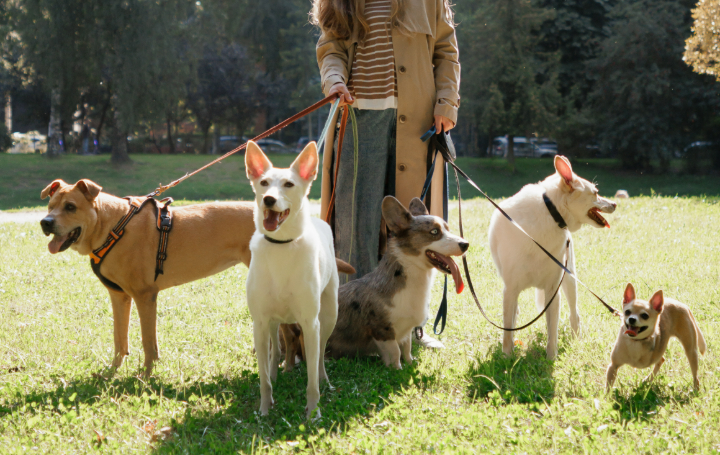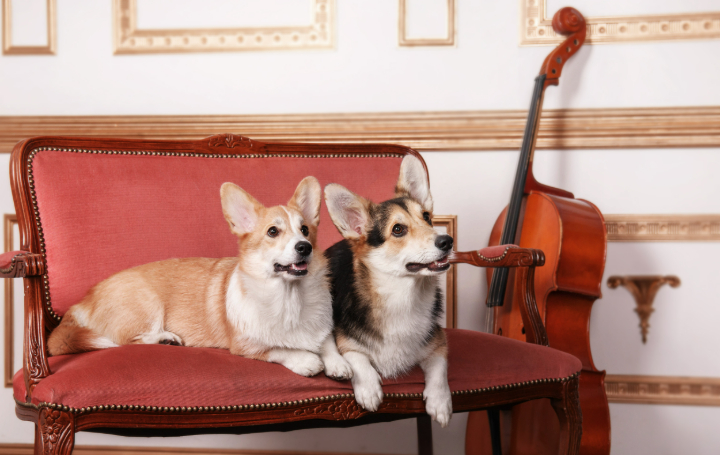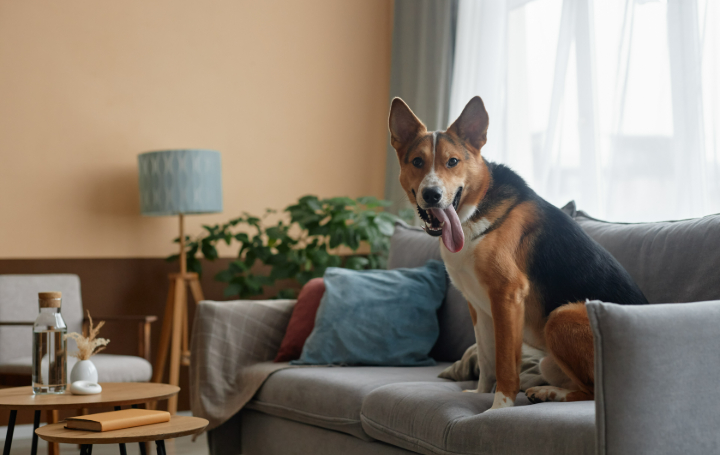How to Manage a Multi-Dog Household: Tips for Harmony
If you’re reading this, it’s likely that having several dogs in your home has blessed—or perhaps overwhelmed—you. Having two, three, or more dogs can make maintaining a multi-dog household feel like a miniature zoo. Although the chaos may seem endless, there are several ways to make sure that everyone has love, serenity, and time to play in your home.
Here’s how to keep your pack in order and manage it without being overwhelmed!
1. Establish a Routine
Just like dogs are habitual, so are we! In order to maintain harmony in a multi-dog family, routines are essential. Maintaining a regular routine, whether it is for walks, feeding times, or toilet breaks, makes dogs feel safe and avoids uncertainty.

Why it works: Predictability is what dogs thrive on. They will begin to pick up the routine and feel more at ease if they are aware that breakfast is served at 7 a.m., followed by a stroll and a snooze. When there are several dogs, this arrangement helps keep things organized for mealtimes and toilet breaks.
Tip: If you have multiple pets with varying demands, use a whiteboard or a straightforward chart on the refrigerator to keep track of timetables. You and everyone else in your home will find it to be a useful visual reminder.
2. Set Up Individual Spaces
Dogs need their own place, just like people. When you live with multiple dogs, there will be times when one of them just wants to relax. Each dog can have a specific space where they can go to rest and unwind when they need it.
Why it works: This allows each dog to have a sense of security and a respite from the social chaos that comes with sharing a home with other dogs. In the absence of this, you may witness conflict or even altercations among dogs as they compete for personal space.
Advice: Set up distinct areas for your dogs to enjoy “me-time” using crates, beds, or even just a corner of the room. Make sure there are no distractions and the areas are comfortable.
3. Socialization is Key
Introducing a new dog into the family requires socialization. It’s similar to meeting the in-laws; until everyone feels at ease, there’s a lot of sniffing, tail wagging, and awkward moments.
Why it works: Make sure dogs get along with one another by socializing them. Dogs must be trained to share food, space, and attention without becoming aroused or possessive. They gain confidence in unfamiliar situations and with new dogs thanks to socialization.
Recommendation: Slowly add new dogs to the flock. If neither dog feels the need to defend their homeland, start by letting them meet in neutral areas. Treats and other forms of positive reinforcement can help to promote amiable behavior.
4. Supervise Playtime
It’s fun to play with lots of dogs, but it can also get a little crazy. There are dogs that are more aggressive, dogs that are more submissive, and occasionally things can go from playful to crazy.
Why it works: Playtime is kept within reasonable bounds by supervision, which prevents rough play or even aggressiveness. If a dog gets overstimulated or overwhelmed, it also enables you to intervene.
Tips: Keep an eye on body language. You should step in if you notice any of your dogs exhibiting stress-related behaviors, such as tucked tails, pinned ears, or snarling. Providing breaks during playtime is also a good idea to keep the dogs from becoming overly agitated.
5. Divide Attention and Affection
Ensuring that each dog receives adequate individual care is one of the difficulties of living with multiple dogs. Simply patting the person closest to you or always showing more love to your “favorite” dog are easy ways to wind up doing this.

Why it works: The amount of love and care that each dog requires varies. Leaving a dog out can lead to behavioral problems including resource guarding, jealousy, or outbursts.
Tips: Try to spend time with each dog individually, whether it’s for a training exercise, a walk, or a snuggle session. This makes them feel important and keeps one dog from stealing your attention.
6. Separate Feeding Stations
If you have more than one dog, you have undoubtedly observed that mealtimes may become somewhat of a fracas. Certain dogs are more driven by food than others, which can result in problems like food aggression or excessive barking.
The reason it works: Having distinct feeding stations makes it less likely that dogs would fight and guarantees that each dog eats their food quietly. Everyone receives their own plate, just like when you set the table for dinner!
Advice: One piece of advice is to feed your dogs in various rooms, or at least in different areas of the same room. In the event that your dog exhibits food guarding, make sure they are in a secure environment and use puzzle bowls or slow feeders to keep them busy.
7. Training, Training, Training!
You are aware that training a dog is an ongoing process if you have ever owned one or more dogs. Additionally, it becomes even more crucial to make sure all of your dogs are familiar with fundamental commands like sit, stay, and come when you have several dogs.
Why it works: Managing well-behaved dogs is simpler, particularly when there are multiple of them. Through training, the pack structure is reinforced, allowing each dog to understand their place in the family and act appropriately in a variety of scenarios.
Advice: To educate and reinforce desirable behaviors, use rewards and praise. Every day, set aside some time to work with each dog both individually and collectively. Pay particular attention to commands like “leave it” and “wait,” as these can be helpful during walks or mealtimes.
8. Give Them Enough Exercise
Dogs must expend energy, just like humans do. Your dogs may start behaving out if they don’t get enough exercise. It’s similar to having overly active children—they end up in trouble!
Why it works: Exercise keeps dogs content, healthy, and at ease. Dogs who are exhausted are less prone to misbehave or argue with their housemates.
Recommendation: Offer frequent chances for physical activity, such as walks, yard games, or trips to the dog park. Your exercise regimen may need to be adjusted to each dog’s needs if they have varying energy levels. For example, lively breeds may benefit from vigorous play, while elderly dogs may benefit from slower, more leisurely walks.
9. Keep Them Mentally Stimulated
Dogs require cerebral stimulation to maintain their happiness and well-being in addition to physical exercise. In a home with multiple dogs, boredom can result in destructive behaviors like digging, chewing, or even fighting for attention.
Why it works: Dogs benefit from mental stimulation more than they do from physical training. It keeps them from being frustrated by keeping their minds active.
Advice: To keep your dogs’ minds active, use puzzle toys, toys that give out treats, and hide-and-seek activities. Additionally, you can teach them new skills or exercise basic obedience to keep their minds active.
10. Ensure Proper Health Care
Keeping an eye on your dog’s health is crucial if you have more than one. This covers routine veterinary care, prevention of fleas and ticks, and keeping an eye out for any symptoms of disease.

Why it Works: The reason it works is because happy dogs are healthy dogs! All of your dogs will remain in excellent health and be less likely to infect one another with diseases if you get regular checkups and timely vaccines.
Advice: Make sure all of their immunizations and treatments are current, and keep track of their veterinary visits. Do not hesitate to contact your veterinarian if you observe any changes in behavior or physical health.
Embrace the Chaos
Although having multiple dogs in the house can feel like a full-time job, it’s also one of the most fulfilling experiences a pet parent can have. You can help your dogs coexist peacefully with you and each other by maintaining organization, establishing limits, and giving them lots of love, care, and attention.
After all, life is never boring when you have several pets. The reward of a contented, serene pack is well worth the effort, as seen by the wagging tails, belly rubs, and unending love. Enjoy the journey—it’s full of fur everywhere, love, and laughter.
Doglime for more dog-related information.
Tags










